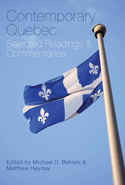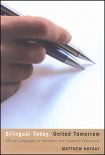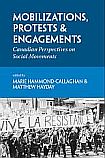John Ralston Saul, A Fair Country: Telling Truths About Canada

As a blogger, I am a firm believer in the role of the public intellectual. I believe that our academics and thinkers need to engage directly with their societies, and go beyond the walls of academia to try to make an impact in their communities when this is possible. As such, there is certainly an important role to be played by popular writers in national conversations about the current state and future of our country. It was with this starting point in mind that I set out to read A Fair Country: Telling Truths About Canada by John Ralston Saul, perhaps Canada’s best-known public philosopher, and companion to former Governor-General Adrienne Clarkson. Saul is widely read (or at least his books are widely purchased) by elites in this country, and so it is useful to know what ideas he puts forth into our national debates. Unfortunately, while I ultimately found some of Saul’s ideas to be interesting ones, the historical evidence for his argument is often quite weak, and his explicit anti-university stance is extremely grating.
I teach a course in historical methods. When looking at documents (any document, historical or otherwise), I ask my students to analyze a number of features, including the intended audience of the piece. Who, in other words, is the reader envisioned by the author. In the case of A Fair Country, I can’t help but think that the book is not intended to be read by individuals in their homes, but rather to have passages read aloud by Saul himself over high tea at Rideau Hall to a coterie of adoring upper-class left-wing fans.
There is an implied “we” used by Saul throughout the book which implies a readership which is comfortable with complexity, embracing of diversity, anti-American, and intimately familiar with the circles in which Saul himself runs. It is a reader who, “of course,” would agree with Saul’s assertion that the U of T economics department was once the leader in the country, but in decline since the 1980s (p.270). It is a reader who runs in professional circles where at least 50% of the couples are in mixed-race marriages (p.314). And it is a reader who would accept, without any source provided, that the top value that would be named by all Canadians, regardless of age or ethnic origin, as defining the heart of Canada as a civilization is that of “fairness and inclusion” (p.302). While Saul provides the occasional endnote in his text, he rarely does so for material which might be contentious (such as any of the aforementioned assertions). Even this is ideologically motivated. Saul, in a fit of postmodern abandon, takes aim at the evidence-based written tradition of the Western academic – decrying it as anti-oral, colonialist and anti-aboriginal. You’ll excuse me if I don’t allow Saul’s pre-emptive strike of accusing his critics of colonialist behaviour to prevent me from criticizing his failure to back up his ideas with evidence to support them.
A Fair Country boils down to three key premises. The first is that Canada is an aboriginal nation, and that an unconscious current of aboriginal ideas of diversity inform all aspects of Canadian identity. The second is that Canadian society was intended to promote welfare, or the common good, and that this foundational principle has been overshadowed by an emphasis on order – which Saul argues can be traced to the replacement of “Peace, Order and Good Government” for “Peace, Welfare and Good Government” in the 1867 British North America Act. And thirdly, Saul contends that our elites have failed Canada, and that their thinking is rooted in a colonial mindset – a legacy of the bad old days of the Family Compact. Each of the three ideas is worthy of discussion. As a historian, however, I would argue that there is a giant helping of anachronism in how Saul argues the long-term continuities of his concepts.
The first concept – the aboriginal foundations of Canada – is probably the idea which will attract the greatest attention and debate. Saul contends that there is an “unconscious” culture in Canada which is rooted in aboriginal ways. He argues that Canadian culture and identity has a tripod structure, with a leg in each of the British, French and aboriginal cultures, and that the country runs into trouble when it attempts to deny its aboriginal roots. By this, he means that there is an aboriginal tradition of diverse citizenship (the expanding circle) and accommodation and acceptance of diversity which has always pervaded Canadian society, and that this was adopted from the First Nations. He argues this métissage concept through the lens of Canadian exceptionalism – that this melding of ways is uniquely Canadian, and sets our country apart from the United States and the European nation-state model.
I like some aspects of this métissage concept for Canadian identity. The acceptance of diversity has become part of a post-1960s model of Canadian identity which has increasingly been promoted by the Canadian government (and also by the interculturalisme model of successive Quebec governments). Canadian federalism also embraces certain aspects of the creative tensions of conflict, rather than seeking definitive resolutions of divisive issues. However, it is Saul’s argument that these concepts are direct extensions of aboriginal concepts – and that they were adopted from those models by Euro-Canadians – which I find difficult to accept on a historical basis. It is true that for part of the colonial period of New France there was much intermingling of European settlers and the aboriginal peoples who taught them how to survive in Canada, and partnered with them in trade ventures. However, the 19th and 20th centuries have not been a period marked by Euro-Canadians learning from aboriginal groups and trying to live alongside them, but rather of deliberately isolating First Nations communities and attempting to force them to assimilate into Western models of living.
While Saul may like to believe that Lester Pearson’s peacekeeping initiative during the Suez crisis was inspired by an unconscious awareness of aboriginal models of conflict resolution, he provides no evidence to support this assertion, and I don’t find it credible. The same applies to his idea that the minimal impairment test used in the Canadian legal system (established in the Oakes case) derives from aboriginal systems of justice. Saul often confuses similarity for causality, and then attempts to shoehorn these similarities into an “unconscious culture” pseudo-psychological model of explanation. In the case of Oakes, it would have been just as easy to assert that Canadians are libertarian by nature, given that minimal impairment is based on the idea of a maximum freedom of action, until it infringes on another’s freedoms. Moreover, the case that Saul makes that Canada is somehow different from the United States in its aboriginal culture makes little sense. Why, given that both countries had indigenous aboriginal populations, and then both long rejected the contributions of first nations, should Canada have these traditions as part of its unconscious culture when the United States, allegedly, does not?
None of this is intended to argue that the concepts which Saul likes from aboriginal cultures, such as the expanding circle model of citizenship, are not valuable ones to draw upon in the present to refashion our ideas about Canadian identity for the future. But it is disingenuous (and perhaps tinged with a little bit of revisionist liberal guilt), to claim that these concepts have always been an integral part of “the Canadian way of doing things”. Canada does need to come to terms with its aboriginal peoples and colonial past, but pretending that aboriginal ways were always part and parcel of how our government and cultural elites have thought about and organized the country does not square with the historical record.
The second major theme developed in A Fair Country is oriented around the famous “Peace, order and good government” clause of the constitution, which grants the federal government power to legislate in areas related to the aforementioned issues. Saul contends that the “order” dimension of this clause has both overly restricted Canadian leaders from thinking in creative ways, and moreover, that “order” was never intended by the framers of the constitution. Rather, early drafts of this section referred to “Peace, welfare and good government”, and “order” was substituted for “welfare” in later versions, particularly after the constitution was subjected to review in Britain. Saul argues that the “welfare” concept is much closer to Canadian values, particularly those inspired by aboriginal governance, and that the “order” concept reflects a narrow, colonial attitude to governance.
There is substantially less meat to this section, but there are nevertheless some key issues overlooked by Saul. The first refers to how the “POGG” power was interpreted by the Judicial Committee of the Privy Council. Saul contends that the narrow interpretation given to this section of the constitution reflected the conservatism of the British law lords. This flies in the face of much of the constitutional scholarship on this issue. Legal historians such as Jack Saywell and Peter Russell have convincingly argued that the actions of the JCPC were more likely inspired by the actions of the provinces fighting for a broader conception of provincial rights, and by the attitudes and training of individual law lords which led them to support a decentralized vision of Confederation.
Saul’s use of the term “welfare” in the modern “social welfare state” sense is also rather ahistorical in the context of 1860s British North America. The idea of the federal government creating vast programs of health, social security and the like would have been difficult to conceive of in this period. It would not be until the rise of Progressive thought several decades later that leading thinkers in North America came to advocate for a role for government in these sectors. Once more, Saul’s advocacy for a federal government dedicated to the welfare of its citizenry is a laudable one. It is his grasping for historical precedent that his argument falls short.
The third section of the book is perhaps its weakest. Entitled “The Castrati”, it is a prolonged diagnosis of the ills facing Canada. In some respects, it reads like a litany of the things Saul wanted to say while he was the consort to the Governor General, but was unable to do so for reasons of protocol. Essentially, Saul contends that there has been a leadership vacuum in the country since the mid-1980s. He argues that this period has been largely devoid of visionary thinking, and marked by the predominance of the Family Compact model of colonial attitudes to Canada, with leaders fearful of bold initiatives and subservient to their new colonial American masters.
Much of this section reads very much like standard issue Council of Canadians’ anti-American social democrat work. There are calls for more Canadian-owned ventures, for an end to resource exploitation from the United States, for a more vigorous defence of the welfare state, for Canadian entrepreneurship, for government investment in bold projects in the North. All of these sorts of initiatives, Saul argues, are held up by “the old colonial elite” which is fearful of Canadian greatness.
I am not averse to many of Saul’s ideas in this section. The ongoing reliance of the Canadian economy on resource extraction without value-added industries is troublesome, and will become more problematic in periods of economic downturn. But once more, anachronism rears its ugly head. Why must we see this mode of thinking as an unbroken string back to the Family Compact? Saul lauds the nation-building efforts of Macdonald, Laurier, St. Laurent, Diefenbaker and Pearson’s government. How then, are we supposed to explain why these leaders were capable of putting together visionary policies in the intervening years between the 1860s and the 1980s, if the Family Compact strain was so strong? Is it not possible that something new is in play?
Saul does try to establish points of continuity of subservient colonialist thought in the “good years” between the Family Compact Era and the post-1980s period, but these often ring false. For example, he cites the abandonment of the term “Dominion” in reference to Canada as a sign that the colonial elite were undermining a Canadian innovation (p.257-8). One may well argue, as I and others have elsewhere, that while the term “Dominion” may have had aspirations to greatness and religious inspiration in the 1860s, its significance had changed by the 1950s and 60s to one which implied a colonial relation to the United Kingdom (i.e. Britain and her Dominions) – particularly in the eyes of Quebecers and new immigrants to Canada – and this meaning which seemed unfit for the independent Canadian identity that was developing in this period. Indeed, it seems odd that Saul would be averse to what was seen at the time as the elimination of a colonial mindset. But here, as so often is the case in this book, Saul does not pay attention to the historical discourses which gave these terms meaning.
The solutions proposed by Saul in the final section of the book will not surprise anyone who followed his travels with Adrienne Clarkson. He calls for a refashioning of Canadian identity as a “northern nation” in touch with its tripod foundations of English, French and aboriginal cultures – a return to its “true” identity. These foundations would provide the starting point for the ever-widening circle of Canadian identity, which could adapt to and incorporate the cultures of new immigrants to the country. These groups would all be supported by a government committed to the welfare of its citizens.
As I’ve already indicated, I have few problems with an expanded model of Canadian citizenship which comes to terms with its aboriginal population, and I am a strong defender of the welfare state. I disagree with Saul that these elements of Canada have deep roots in our collective unconscious, but I’m in favour of developing them for the future. As for the “Canada as northern nation” trope, I’m more reluctant to endorse it. I don’t believe that colonialism alone explains why so many Canadians live close to our southern border. While many First Nations peoples live in the northern three-quarters of Canada, I believe that it will be a very hard sell to convince the remainder of the population that Canada’s destiny lies primarily in circumpolar ties. Perhaps this is because, unlike Saul, I’m less convinced that Canadian culture is so antithetical to that of the United States. Or perhaps it stems from the fact that every winter I bemoan the 17th and 18th century French fashion for furs which led to the colonization of such a cold, inhospitable country. Either way, I remain unconvinced that the Polar Canada model will gain traction any time soon.
In sum, while some of Saul’s ideas about how Canadian identity should develop in the future have potential, he fails to convincingly argue that this aboriginal, welfare-oriented identity has the deeply-rooted historical continuity he ascribes to it, and there is a consistent lack of evidence to support his arguments which makes much of his book extremely frustrating for a Canadian scholar. While Saul’s coterie might nod their heads sagely at his proposals, many other readers of his book will require more evidence and fleshed-out arguments to be convinced.
Labels: A Fair Country, book review, John Ralston Saul
Recommend this Post





5 Comments:
This comment has been removed by the author.
Gee, thanks for ruining the ending for me! :)
I'm only about a quarter of the way through it and I'm already finding myself altering my way of thinking about a number of things. I agree, the historical material he presents is poorly documented - although from my own take as a genealogist, most of it rings true. At the very least, I know that there is often a disconnect between the public, 'historical' account and the experience of those who were personally involved.
I guess the difference is, I'm not reading this as a history book. I'm reading it as a philosophy book that approaches history as national mythology. Facts are facts and documented events are tough to dispute. But admit it - how we interpret those facts and events is largely a matter of choice, influenced by our cultural assumptions. So why not choose these assumptions and this mythology?
It sure beats the alternatives.
Sorry Jennifer, but I can't agree fully with you.
Historians do debate the meaning of different facts and events from the past. But they try to do so in a way that is as faithful as possible to the historical context in which events happened and which does not impose current thinking/values/biases on historical actors. Saul falls victim to this particular trap too often.
And the problem, as I see it, with giving Saul a pass because we happen to like his assumptions and his mythology is that we must then, I would argue, concede that pundits from the right are equally free to twist the facts of the past to suit their biases/agendas/ideologies. If I'm going to support a left-leaning approach to Canadian identity, I want it to be more readily defensible from challenges.
Man. You still write the best book reviews in the whole freaking world.
Agreed. I just finished reading the book and then went to see Saul speak about it, and you have perfectly nailed the things that have been bothering me about it that I haven't exactly been able to put my finger on. It's as if JRS has this deep-seated conflict about whether he wants to be an academic or not. I think he desperately wants to look like one, without being subject to the rigour that would entail.
I too, though, like a lot of the ideas in the book as advice for where Canada should be headed.
- Andrew
Post a Comment
<< Home